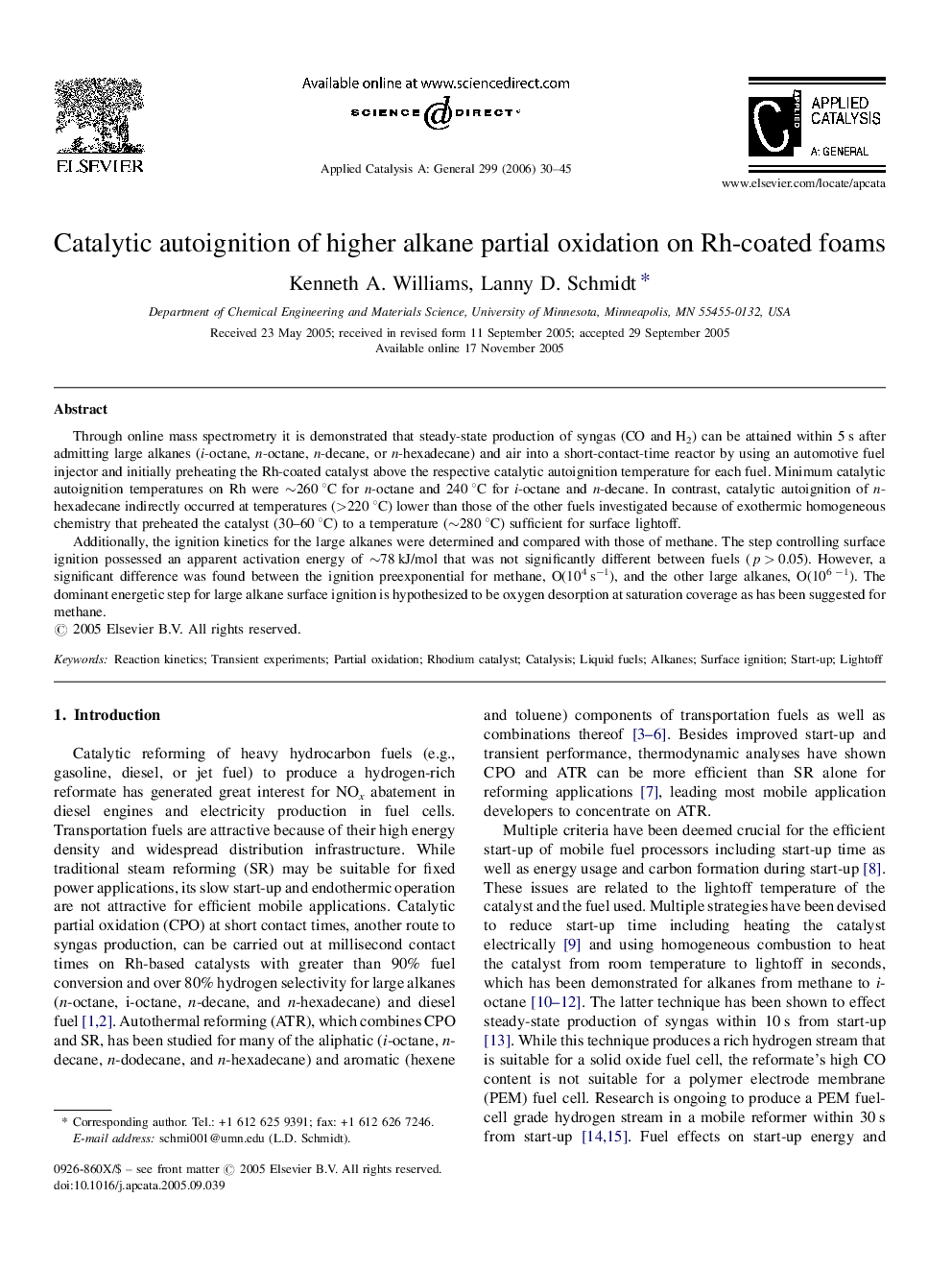| Article ID | Journal | Published Year | Pages | File Type |
|---|---|---|---|---|
| 44178 | Applied Catalysis A: General | 2006 | 16 Pages |
Through online mass spectrometry it is demonstrated that steady-state production of syngas (CO and H2) can be attained within 5 s after admitting large alkanes (i-octane, n-octane, n-decane, or n-hexadecane) and air into a short-contact-time reactor by using an automotive fuel injector and initially preheating the Rh-coated catalyst above the respective catalytic autoignition temperature for each fuel. Minimum catalytic autoignition temperatures on Rh were ∼260 °C for n-octane and 240 °C for i-octane and n-decane. In contrast, catalytic autoignition of n-hexadecane indirectly occurred at temperatures (>220 °C) lower than those of the other fuels investigated because of exothermic homogeneous chemistry that preheated the catalyst (30–60 °C) to a temperature (∼280 °C) sufficient for surface lightoff.Additionally, the ignition kinetics for the large alkanes were determined and compared with those of methane. The step controlling surface ignition possessed an apparent activation energy of ∼78 kJ/mol that was not significantly different between fuels (p > 0.05). However, a significant difference was found between the ignition preexponential for methane, O(104 s−1), and the other large alkanes, O(106 −1). The dominant energetic step for large alkane surface ignition is hypothesized to be oxygen desorption at saturation coverage as has been suggested for methane.
